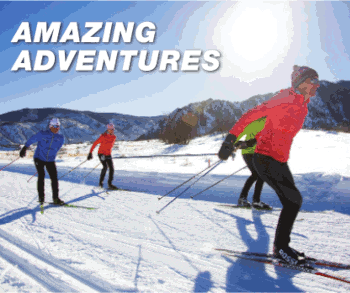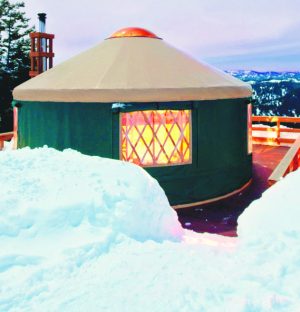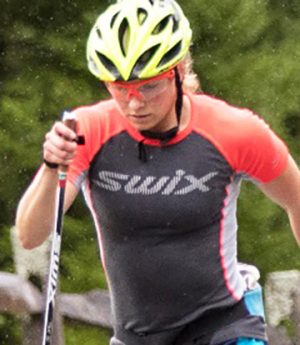Nathan, you and Zach Caldwell spent three years gearing up for the Vancouver Olympics. What are some of the thoughts you’ve taken away from Whistler and the Olympic Development Structure Project?
Zach Caldwell: It was an interesting and demanding process resulting in equal parts reward and frustration. In the end, three years of focusing on a specific venue with a specific set of challenges made us better generalists. The most valuable lessons we took from the project are the ones that we continue to use on every pair of skis that we grind – to focus on doing high quality work at every step, and produce broad-range solutions that provide good flexibility.
Nathan Schultz: Whistler for me was an amazing learning experience. Being able to dedicate ourselves to testing and making skis fast for 12 hours (or more) per day with intense pressure, competition and ridiculous weather is a compressed education at the highest level. I was disappointed in some of the results, but more disappointed in the way the US ski community responded to those results and ignored the excellent progress some athletes were making.
I’m a bit of a luddite when it comes to grind menus. Any specific comments you’d like the SkiTrax readers to know about in regards to the new host of grinds you’re introducing this season to the public?
ZC: Our new grinds represent better broad-range solutions than our old grinds. We’re not offering many of the truly specialized Callaghan Valley grinds that we came up with during testing because they’re too specialized to that locale. What we’re offering with the new grind menu are the lessons learned from three years of intensive testing, applied to the goal of broad-range solutions.
There is a constant push and pull between the temptation to offer grinds that we know are great in specific conditions, and the desire to present a simple and easy to understand menu. We’ve always tended to offer more rather than fewer structures because we don’t want to dumb-down the process. We try to steer people toward some basic, simple decisions, and we always welcome questions and discussion of more specific concerns.
NS: I think the biggest thing that I would emphasize is that stone grinding is just one piece of the puzzle. The reality is that ski quality is such an important piece of overall performance that the best grind is actually the grind that is good in a broad range instead of great sometimes and bad others. We want to be able to put the best skis in the race as often as possible. I know that is true even at the international elite level – great skis trump everything else. That’s not to say you can have a bad grind or wax if you have a good pair of skis, but rather that when you do have a good pair of skis, you want them in the race as much as possible.
It’s pretty interesting to read the last couple years about the factory tours you’re taking around the ski manufacturing hubs. What are you seeing in regards to progression and innovation in regards to racing ski manufacturing?
NS: The factory tours are really interesting because we get to see how each company brings the two aspects of R&D and production together. We get to play around at the races with the latest ideas that the racing departments are testing during the winter, and then we get to see those same guys at work in the factories in June supervising the transfer of their ideas into the mass production of skis for the next model year.
Ski technology itself is evolving and everyone is making incremental improvements to designs and materials. Things get lighter, stronger, stiffer and designs get more refined. The really interesting piece to me is that production techniques and quality control have improved dramatically in the past four years. This means that the gear that comes out of the factory is much closer to the designer’s intention and much more consistent. For the consumer, this is great news – improved design and better built gear.
What are some general themes you’ve picked up on in your dealings with people like Pierre Heinrich of Rossignol, or when hanging out in ski manufacturer race rooms from Austria to France to Norway?
NS: The general theme is that making skis is tough work. So much testing goes into the process that it is mind-boggling to understand how much work these guys are doing. And then the challenges of bringing prototype designs into full production under tight schedules….
It is illuminating to see the similarities and differences in technology at each company. They would kill me if I described details, but in general, the process of building the skis is strikingly similar across all brands. The big variations come in the materials used and the shapes that each company finds to be the best for their skis. Everyone has different ideas on what is the ideal ski, so they are each pursuing different goals using unique materials, sidecuts and laminations to make what they think is best.
I remember you playing around with a thermal pressure sensor in Whistler two springs ago, mapping out to see what some of the best skis looked like. What are some of the custom ski testing equipment you’re using, and how this is helping the end result of the BNS hand-ski selection process?
ZC: That was a really interesting process and opportunity to grab some of the best skis from you guys and gather quantitative information. What we found was that your best skis and your worst skis don’t look too different when we map the pressure. We definitely couldn’t have identified your good skis using that technology.
Learning skis is a real challenge, and we’ve put a lot of time and resources into measuring and quantifying skis over the years. All of this has helped us to develop our hands and eyes as the most comprehensive and accurate tools we’ve got for evaluating skis and identifying quality. We’re relying on our understanding of materials and construction techniques more than ever.
NS: We brought that pressure mat to test it out and see if the technology was viable for us. It was interesting because we could visualize the differences between average skis and great skis, but there was not a lot of hard data that was useful to give us a tool we could use effectively to pick skis. It was interesting, however, because it visually confirmed what we knew about great skis – that they transfer energy from the skier to the snow with very smooth and consistent pressure zones.
What’s your philosophy on picking Zero skis? I understand some of Kris Freeman’s zeros skis were particularly soft, with some of his Fischer skis having a very specific camber with extreme tip and tail splay.
ZC: We spent a huge amount of time working with no-wax solutions during the project. In fact, we spent as much time on kick solutions as we did on grinds. It was a real bummer that there were so few opportunities to use the techniques we developed during the Olympics.
What we found is that there is pretty much just one optimal kicking surface for hairies or zero skis. Of course, there are lots of different types of base material, and making something close to that optimal surface requires different techniques on different bases. But we’re not really varying the way we make the hairies themselves.
The primary means of addressing different conditions with zero skis is by using skis with different characteristics. The softest pair of skis that Kris had at the Olympics was a pair of zeros, but so was the stiffest pair. We worked with a huge number of different pocket shapes, stiffnesses and pressure distributions to figure out which skis work best in which conditions. That’s why you ended up skiing your relay leg on hairies made on a regular waxable skis – they had the best combination of characteristics for the conditions.
What’s your take on hand-structuring on top of machine grinds? And if/when you hand-structure, how do you control this – the repeatability must not be as high as a Tazzari?
NS: Hand structuring is a vital way to optimize the interaction between the ski base and snow crystals. While both stone grinding and hand structure contribute “structure” to the final equation, they each play unique roles and are not interchangeable. Even when conditions are quite cold, we find that hand structure adds speed. It’s rare to have a day when hand-structure of some sort does not increase speed.
There are a lot of great hand structure tools out there and with a little practice, anyone can apply good hand structure on top of a grind. The key to success is to have a light hand and don’t overdo it with lots of passes. Snow crystals are small – you don’t need much to change the way the base works with them. We have a section in our 2010-2011 BNS magazine that covers the whole process in depth.
I heard about this very efficient, very accurate way, you and Zach get a fair approximation of a racer’s ski fleet by sighting down the side of the ski? Something about the longer the flat section of the ski, the faster. Care to enlighten me and SkiTrax readers any more on this or other similar techniques?
ZC: Nope – we don’t care to talk about that. Black arts are mostly smoke and mirrors, and the whole mystique is ruined when the illusion is explained. But it’s a bit more complicated than just looking down the side of the ski. It has to do with an understanding of the materials, and how their qualities change as the shape of the ski changes. Enough said.
Nathan and Zach, thanks for taking the time and sharing your insights into stone grinding.
ZC, NS: Thanks.






![National camp action [P]...](https://skitrax.com/wp-content/uploads/2019/08/Duluth-4-2019-08-08-at-10.46.51-AM-300x246.png)
![Matt Liebsch on the CXC Elite Team [P] CXC...](https://skitrax.com/wp-content/uploads/2019/08/Matt-Liebsch-CXC.2-525x700.4-300x267.jpg)
![Dan LaBlanc [P]...](https://skitrax.com/wp-content/uploads/2019/08/Dan-LaBlanc-img_1855.3.jpg)

![Nathan Schultz on the case at Vancouver 2010...[P] BNS](http://skitrax.com/wp-content/uploads/2010/10/Nathan-Schultz.2-200x133.jpg)
![Zach Caldwell during the grinding process. [P] Nathan Schultz](http://skitrax.com/wp-content/uploads/2010/10/Zach-GrindIng.2-200x268.jpg)
![The US team with Kris Freeman (centre) and coach Pete Vordenberg (r) at a World Cup. [P] Phil Bowen](http://skitrax.com/wp-content/uploads/2010/10/Freeman-at-WCup.2.jpg)
![Waxing Skis at the 2010 Olympic Games [P] Nathan Schultz](http://skitrax.com/wp-content/uploads/2010/10/Waxing-Skis-Games.2-200x257.jpg)
![Zach Caldwell selecting skis at West Yellowstone Festival. [P] Nathan Schultz](http://skitrax.com/wp-content/uploads/2010/10/Zach-Yellowstone2009.2.jpg)